Tracking down aroma – science meets senses
- Like
- Digg
- Del
- Tumblr
- VKontakte
- Buffer
- Love This
- Odnoklassniki
- Meneame
- Blogger
- Amazon
- Yahoo Mail
- Gmail
- AOL
- Newsvine
- HackerNews
- Evernote
- MySpace
- Mail.ru
- Viadeo
- Line
- Comments
- Yummly
- SMS
- Viber
- Telegram
- Subscribe
- Skype
- Facebook Messenger
- Kakao
- LiveJournal
- Yammer
- Edgar
- Fintel
- Mix
- Instapaper
- Copy Link
Posted: 29 July 2019 | Dominique Weiss, Dr Christlbauer | No comments yet
Aroma analysis is a valuable addition to the quality assurance of products. The different questions that can be answered by aroma analysis are as varied as the range of aroma compounds themselves…
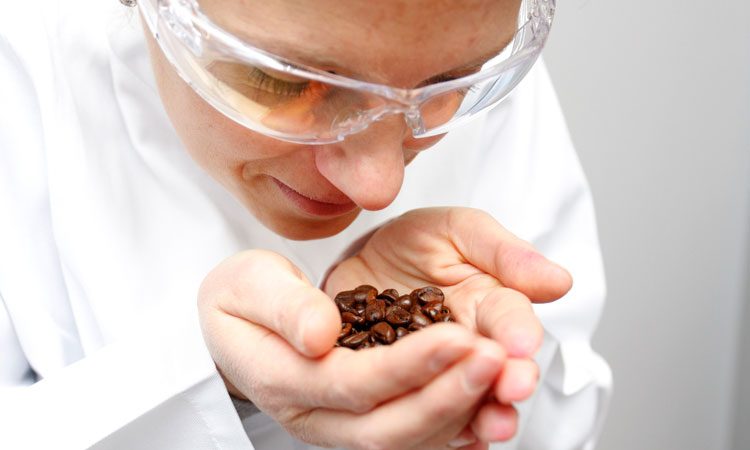

The technical term ‘aroma’ solely describes volatile compounds which can be perceived olfactorily, by the human sense of smell. Commonly known aroma impressions such as ‘smoke’, ‘vanilla’ and ‘coffee’ generally consist of a multitude of individual aroma compounds. Aroma perception is a part of the organoleptic perception, which is formed by the aroma, taste and trigeminal impressions.
In contrast to the aroma, the taste of a product is perceived gustatory via the human taste organ and the trigeminal impressions via the fifth cranial nerve (trigeminal nerve) (Fig. 1). This interaction gives the overall organoleptic impression, known as ‘flavour’.
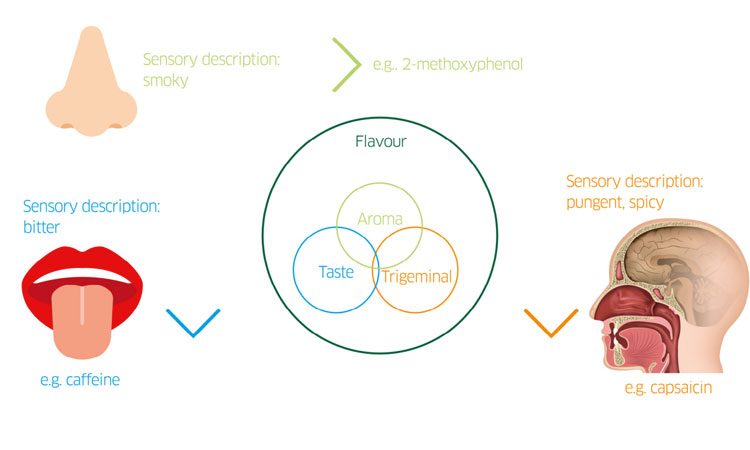

Fig. 1: Organoleptic perception is formed by the perception of aroma, taste and trigeminal impressions (Sources: Flavour: From Food to Perception; ISBN: 9781118929407, S. XI, mod.; Adobe Stock).
How is aroma perceived and detected?
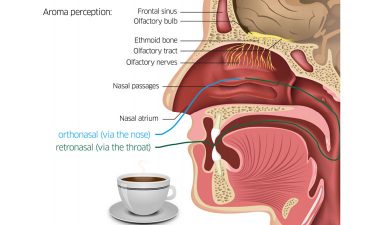

Fig. 2: The volatile aroma compounds are received via the nose (orthonasal) and throat (retronasal) and perceived at the olfactory receptors (Sources: Aromastoffe – Ein wichtiges Stück Lebens(mittel)qualität, Flavourings technical group, Association of German Food Chemists, p.1, mod.; Adobe Stock; Pixabay)
The volatile compounds of the aroma are perceived at the olfactory receptors of the nose. These compounds can be received via the nose itself or via the throat (Fig. 2). Only a small number of volatile compounds are aroma-active compounds – about 5 percent in food. In addition, these aromatic substances are usually only found in very low concentrations, which are nonetheless sufficient to stimulate the olfactory receptors of the human nose.
The sensitivity of the instrumental detectors of the analytical equipment often fails to keep up with the human nose. The determination of the individual components of an aroma is therefore carried out using the combined measurement principle of gas chromatographic separation and the subsequent detection via the human nose at the sniffing-port (Fig. 3), a technique known as gas chromatography olfactometry (GCO). The results determined in total give a product’s spectrum of aroma compounds.
Why analyse the spectra of aroma?
The following practical examples provide an overview of the most common questions.
- There is a shortage of raw material and/or raw material prices rise significantly and there is a need to determine the level to which a specific raw material can be reduced within the recipe, while still maintaining the quality of the product’s aroma
- The supplier is no longer able to deliver a certain raw material at the usual quality and there is a need to determine the extent to which the new quality of the raw material influences the quality of the product’s aroma

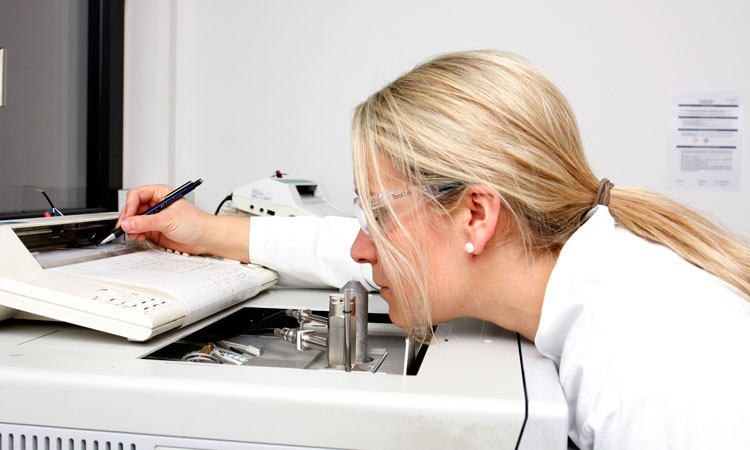
Fig. 3: The aroma expert determines the different aroma within a product by using the sniffing-port, whereas the gas chromatograph separates them (Source: aromaLAB) .
- The use of added aroma is to be reduced within the context of providing ‘clean labelling’ and there is the need to determine the reduced level at which the quality of the product’s aroma can still be maintained
- During a new product development, a storage test is used to determine up to which point in time the product’s aroma will retain the desired quality
- Prior to changing the production process/technology, there is a need to determine to what extent the change in conditions will influence the quality of the product’s aroma
- A particular recipe of unknown composition is to be examined to determine the main components of its aroma.
In general, the consumer will have a negative perception of the aroma if:
- The typical aroma of the product is missing or the perception is too low
- There is an inappropriate mixture of aroma compounds (recipe)
- There are perceivable off-flavours.
Off-flavours generally occur during the transport of raw materials, in the event of changes in recipes, changes in production parameters, followed by the introduction of new packaging, changes in storage conditions and during the transport of the goods to the customer.
What are the benefits of aroma analysis?
The analytical data form the basis for further clarifications and the deducing of internal measures. Targeted conclusions can only be drawn about the cause of the off-flavours once the characteristics of the aroma fingerprint are known. The most frequent causes are of a microbiological or chemical nature (Tab. 1).
The downstream possibility to synthesise the off-flavour is particularly helpful in daily work. The standardised off-flavour can be used for training purposes and for the early detection of deviations in odour. Off-flavours often occur in isolated cases and the recognition and evaluation of the situation is usually difficult in everyday work life. With the aid of off-flavour standards, processes within the framework of deviation management can be standardised.
As a result, trained personnel are able to directly recognise off-flavours upon the receipt of the goods, during the production process or the quality assurance routine and can act in accordance with predefined measures. The assignment of odour-related deviations during the process facilitates rapid intervention and avoids and/or reduces production errors and costly product recalls.
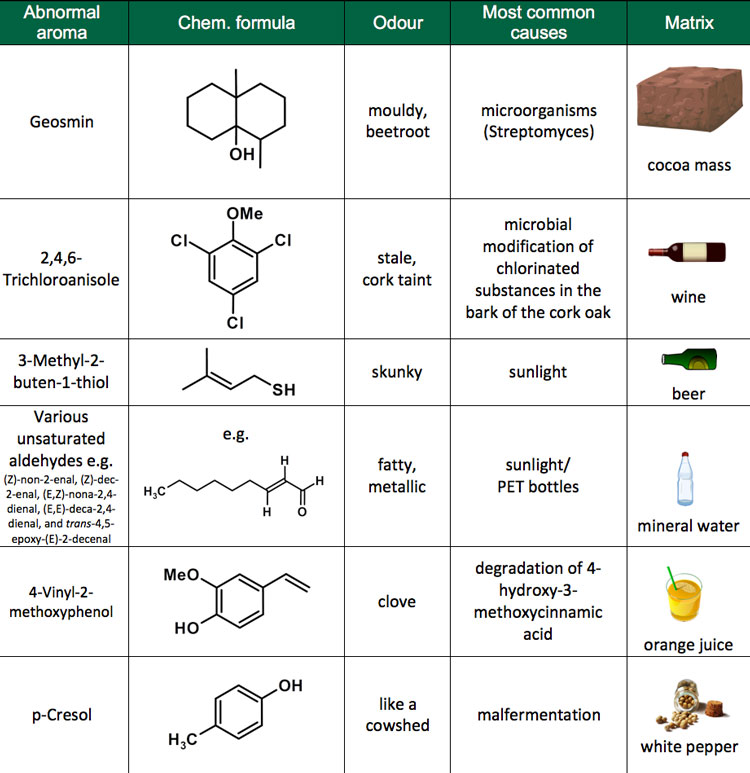

Tab. 1: Overview of the most common off-flavours by matrix (Sources: aromaLAB; Pixabay).
Biographies




Related topics
Equipment, Flavours & colours, Product Development, Sensory technology, Technology & Innovation









